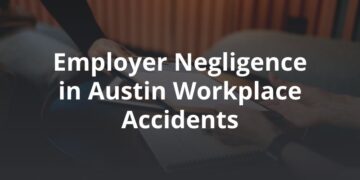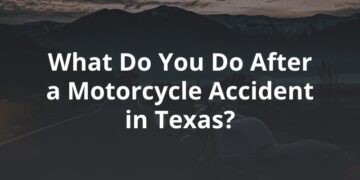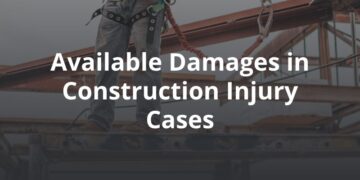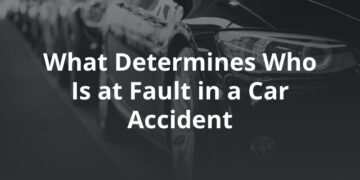Key Takeaways:
- 5,092 crashes involving autonomous vehicles were reported in Texas over a two-year span.
- 2,235 people were injured, and 42 lost their lives in these crashes.
- 28% of crashed autonomous vehicles were in Harris County.
- 901 autonomous vehicles were involved in crashes in Pasadena, more than any other city in Texas.
- The Tesla Model 3 was the most frequently crashed autonomous vehicle, with 266 incidents, followed by the Ford F-150 (266), Toyota Corolla (188), and Tesla Model Y (188).
- Failure to control speed was the most common contributing factor, affecting 26% of crashed autonomous vehicles.
Autonomous vehicles, more accurately described as vehicles equipped with driver assistance programs, are becoming increasingly common on Texas roads. In fact, Texas serves as an ideal testing ground for this technology, alongside its growing adoption by modern consumers. However, not all autonomous vehicles are created equal. These vehicles operate on a spectrum of automation levels ranging from 1 (basic driver assistance) to 5 (full automation).
As of 2023, more than half of all new vehicles sold in the U.S. come equipped with some form of Advanced Driver Assistance Systems (ADAS), which encompass the lower levels of automation. While these features can enhance safety and convenience, their real-world impact on crash rates remains a key area of study.
In this analysis, we break down crash data involving vehicles with driver assistance systems between March 2023 and December 2024, categorizing incidents by automation level, identifying the Texas cities and counties with the highest crash counts, and highlighting the makes and models most frequently involved. It’s important to note that these statistics do not imply these vehicles are inherently more likely to crash or cause harm. The data does not explicitly indicate whether the system or the driver was at fault, but it does provide critical insights into the evolving relationship between humans and automation on the road.
By exploring these topics, we aim to better understand the current state of autonomous vehicle technology in Texas and its implications for driver behavior, road safety, and the future of transportation.
Defining Vehicle Automation Levels
Before getting into the findings, it’s important to understand the different levels of automation in vehicles. These five levels can be divided into two main categories: ADAS (Advanced Driver Assistance Systems) and ADS (Automated Driving Systems).
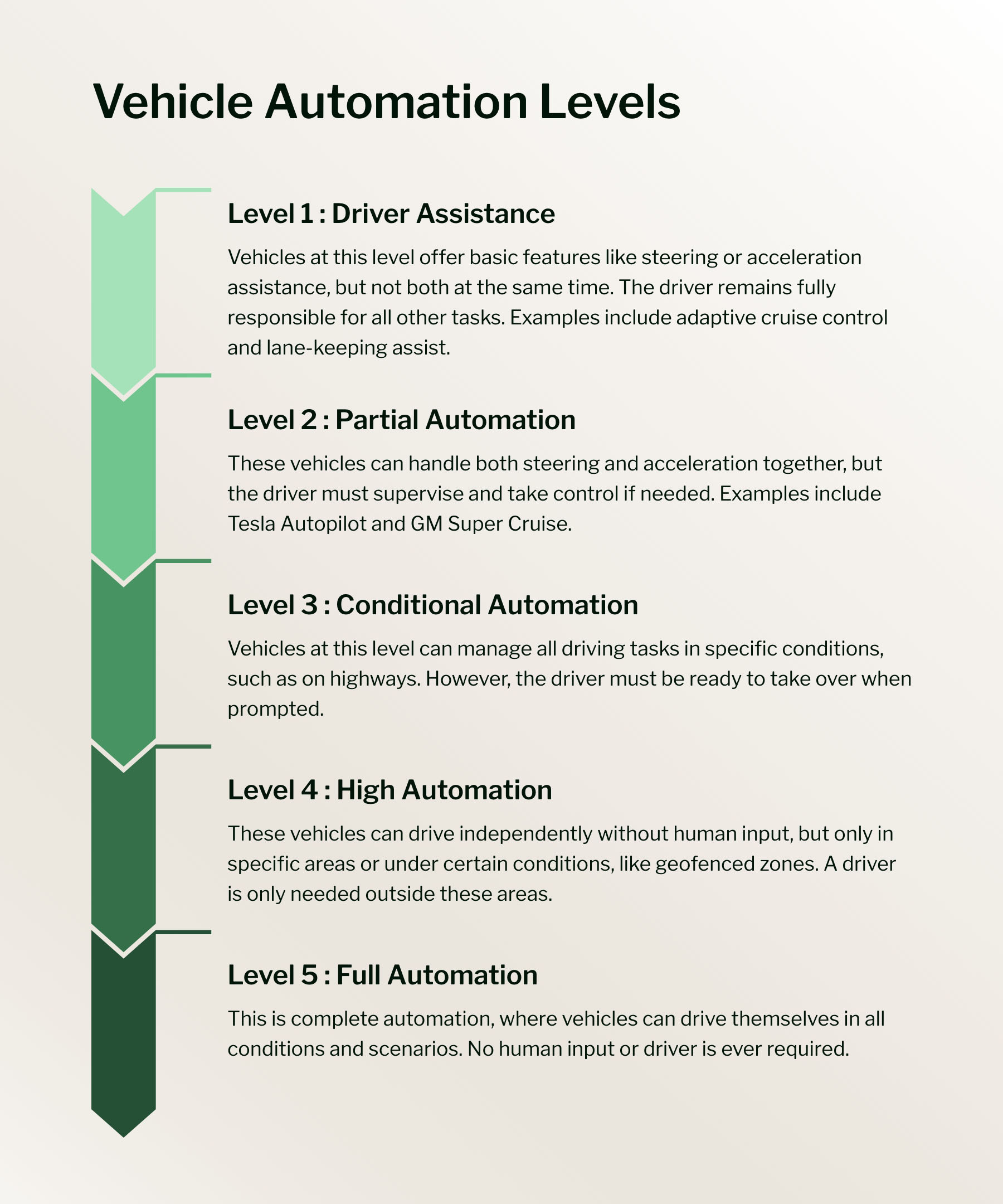
Levels 1 and 2 are known as Advanced Driver Assistance Systems (ADAS), which support the driver with features like adaptive cruise control and lane-keeping but still require the driver to maintain full control of the vehicle. On the other hand, Levels 3 through 5 are referred to as Automated Driving Systems (ADS), as they shift more of the driving responsibility to the vehicle. Level 3 systems can manage driving tasks under specific conditions but require the driver to step in when prompted. Level 4 systems operate independently within defined areas, while Level 5 achieves full automation, allowing the vehicle to drive in any environment without human involvement.
It’s important to note that the adoption of these automation levels has been gradual, with higher levels like 3, 4, and 5 still in the early stages of mainstream use. Features found in Level 1 systems, such as cruise control and lane-keeping assistance, started appearing in a wider range of models in the 2010s. Tesla’s Autopilot, introduced in 2015, was one of the earliest and most prominent examples of Level 2 automation. By 2017 and 2018, Level 2 features became more common, with mainstream automakers offering them in more affordable models, not just high-end vehicles. By 2020, many new vehicles, especially those in mid-range price brackets, came with Level 2 features as standard or optional upgrades.
Tracking Crashes Among Autonomous Vehicle Owners in Texas
Now that we’ve established the different levels of automation, let’s look at the crash data to see how vehicles equipped with these systems have fared on Texas roads and the harm they’ve caused for some.

Since March 2023, there have been 5,092 unique crashes involving vehicles operating at various levels of automation in Texas. These crashes resulted in injuries to 2,235 drivers and passengers and claimed the lives of 42 people. Notably, none of the fatalities involved vehicles operating at levels 3 to 5 automation. This may reflect advancements in safety features at higher automation levels, the specific severity of these crashes, or simply a statistical outcome due to their limited presence on the road. Instead, the deaths occurred in vehicles with no automation or those operating at levels 1 or 2.
In total, 5,815 autonomous vehicles were involved in these crashes. Breaking this down by automation level, 76.75% (4,463 vehicles) were operating at Level 1, or driver assistance. Meanwhile, 20.72% (1,205 vehicles) were operating at Level 2, or partial automation. The remaining 2.49% (145 vehicles) were classified as Levels 3 through 5, ranging from conditional automation to full automation.
Where in Texas are These Crashes Happening Most?
Next, we explored whether certain areas of Texas experienced a higher concentration of these crashes than others.
Harris County recorded the highest proportion of crashed autonomous vehicles, accounting for 27.63% of all such incidents in Texas, with 1,614 vehicles involved. Within Harris County, Pasadena emerged as the city with the highest count of crashed autonomous vehicles, reporting 901 vehicles. Houston, along with parts of Pearland and Friendswood, also falls within Harris County. Houston ranks third in the state for crashed autonomous vehicles, further contributing to Harris County’s top position.
Hidalgo County accounted for 12.29% of crashed autonomous vehicles, ranking second. This includes Weslaco, which reported 590 crashed autonomous vehicles, placing it second on the list for these incidents.
Other major cities in Texas, including San Antonio, Dallas, Fort Worth and Austin, also contribute significantly to the total number of crashed autonomous vehicles. Dallas County, for instance, ranks third overall, accounting for 7.33% of these incidents.
The concentration of crashed autonomous vehicles in larger cities is influenced by several interconnected factors. Urban areas tend to have higher population densities, which naturally increases the number of vehicles on the road, including autonomous vehicles. Additionally, these cities often see higher rates of autonomous vehicle adoption, driven by socioeconomic factors. Residents in these urban areas are more likely to have the financial means and interest in purchasing advanced vehicles that include autonomous features. Furthermore, larger cities are often major industry and employment hubs, resulting in long commutes and a higher frequency of vehicle use. This combination of factors contributes to the greater presence of autonomous vehicles in urban settings, and as a result, their increased likelihood of being involved in crashes.
The map below shows the specific locations where autonomous vehicles experienced a crash across the state. Zoom in for a detailed view of areas of interest.
Which Car Makes Are Associated with Autonomous Vehicle Crashes?
We also examined the vehicle makes most often involved in these incidents throughout Texas. Below are the top 15 models with autonomous features that recorded the highest number of crashes.
The Tesla Model 3 leads with 266 crashed vehicles, followed by the Ford F-150 with 188. Tied for third are the Toyota Corolla and Tesla Model Y, both with 176 crashed vehicles. Other common models include the Toyota Camry, RAV4 and Highlander, which also appear among the top entries.
Many of these models are not only widely popular but also common in the autonomous vehicle market. Tesla’s Model 3 and Model Y, for example, are at the forefront of the autonomous vehicle sector due to Tesla’s advanced self-driving technology. The Ford F-150, a top seller in the broader market, has also been integrated with autonomous features in certain versions, contributing to its presence in these statistics. Similarly, the Toyota Corolla, Camry and RAV4 are frequently equipped with partial automation, making them frequent players in the autonomous vehicle landscape.
We’ve also broken down the top vehicle makes according to their level of automation to provide a more nuanced understanding. Below is a table for each level, from 1 through 5.
What Factors Contribute to Autonomous Vehicle Crashes?
Here, we explore the factors behind crashes involving levels 3-5 autonomous vehicles and present a few real examples from the past year to illustrate these influences.
The data reveals several key factors behind crashes involving level 3-5 autonomous vehicles. The most significant is “failed to control speed,” which accounts for 25.52% of these crashes, with 37 incidents attributed to this issue. “Failed to yield right of way” follows closely, contributing to 16.55% of crashes, or 24 incidents. Driver inattention, which may result from over-reliance on the automation system, is another common factor, responsible for 13.79% of these incidents, involving 20 vehicles.
Other notable contributing factors include “failed to drive in a single lane,” accounting for 11.03% of crashes (16 incidents), and “changing lanes when unsafe,” contributing to 9.66% of these crashes, involving 14 vehicles.
It’s important to note that the dataset does not specify whether the contributing factors were due to the driver of the autonomous vehicle or the other driver(s) involved. Without this clarity, it’s difficult to pinpoint the exact role of the autonomous vehicle’s system versus human drivers or other external factors.
In some cases, we were able to infer the responsible party by analyzing additional data fields, such as in the example below:
Houston, September 2024:
A Tesla Model 3 operating at Level 5 full automation and a Dodge Challenger were involved in a collision while driving side by side. The Dodge, whose driver was under the influence, failed to stay in its lane, leading to the accident. One individual sustained what appeared to be minor injuries.
- None of the drivers operating autonomous vehicles at Levels 3-5 in reported crashes were under the influence of drugs or alcohol.
Here are a couple more accounts of real-life crashes that occurred in Texas in 2024:
Plano, September 2024:
A multi-vehicle crash involving four cars occurred, including a Tesla Model Y operating at Level 5 full automation and three non-automated vehicles. Contributing factors included failure to control speed, with all vehicles traveling in the same direction. One person suffered serious injuries.
- “Failure to control speed was the leading contributing factor in crashes involving Level 3-5 autonomous vehicles, accounting for 26% of reported incidents.
Dallas, October 2024:
A Toyota Highlander operating at Level 5 full automation and a bus with no automation were involved in a crash during a left-turn maneuver. The collision occurred when one vehicle turned unsafely.
- Intersection crashes accounted for 34% of all types of crashes for Level 3-5 autonomous vehicles.
Allen, December 2024:
A Tesla Model 3 at Level 5 full automation and an Infiniti QX50 collided when one of the vehicles failed to yield the right of way while turning left. Two individuals were injured in the crash.
Nueces County, October 2024:
A Ford Expedition operating at Level 5 full automation struck a wild animal on a dark, unlit road in a rural area outside city limits. The incident occurred around 11 p.m.
A Look Into the Future of Autonomous Vehicles in Texas
As Texas continues to see an increase in the number of autonomous vehicles on the road, the state stands out as a natural fit for this technological shift. With its major cities, expansive road networks, and typically favorable climate, it makes sense that more consumers in the state could be inclined to embrace autonomous driving, especially as ongoing initiatives have already introduced the technology to many. Autonomous vehicles promise significant benefits, including convenience, efficiency, and enhanced safety, making them not just a personal transportation solution but a catalyst for broader changes in key industries such as freight, delivery, and public transit.
In 2024, Waymo began testing its robotaxi service in Austin, with plans for a full commercial launch via Uber in 2025. Meanwhile, Cruise, a subsidiary of General Motors, conducted a testing phase in Houston in 2023, though its operations were halted in 2024 due to regulatory and technical challenges. Despite Cruise’s departure, autonomous vehicle services remain active in Houston. Nuro, a company specializing in driverless delivery, initially partnered with Kroger in 2019 for grocery deliveries and has since expanded to Uber Eats, Domino’s, and CVS Pharmacy, offering food, essentials, and prescription medication deliveries. In November 2024, the company announced plans to expand its service area in Houston by 70% reinforcing Texas’ role in advancing autonomous delivery solutions.
Autonomous trucking is another area where Texas is positioned to play a leading role. As a major freight transportation hub, the state’s key corridors, including I-10, I-35, and I-45, make it an attractive location for testing and deploying self-driving trucks. Companies like Kodiak Robotics, Plus, Aurora Innovation Inc., and Torc Robotics are actively operating in Texas. Autonomous trucks could help alleviate the growing driver shortage, improve fuel efficiency, and reduce long-haul driver fatigue. Additionally, autonomous last-mile delivery services could thrive in urban and suburban areas, where demand for quick and reliable deliveries continues to rise.
Public transportation is also seeing early adoption of autonomous technology. In 2021, Arlington launched the RAPID program, offering self-driving vehicle rides in downtown Arlington and on the University of Texas at Arlington campus. With funding secured through mid-2025, the program is actively collecting data on residents’ perceptions of autonomous transit to help shape its future. Houston has also ventured into autonomous public transportation, launching a pilot program in 2023 for Futurelink, a zero-emission, self-driving shuttle service. As these programs develop, they could pave the way for broader adoption of autonomous transit solutions across Texas.
As Texas continues to embrace autonomous vehicles, it’s crucial to examine their real-world impact, particularly in terms of safety. Crash data shows that while autonomous vehicles promise to reduce human error, they are not immune to collisions, particularly in scenarios involving human-driven vehicles. Many reported incidents stem from traditional contributing factors, such as failure to control speed, failure to yield, and driver inattention, highlighting the challenges of integrating self-driving cars into a system still dominated by human drivers. The future of autonomous vehicles in Texas will depend not only on technological advancements and regulatory support but also on continued data-driven evaluations of their real-world performance. As crash analysis evolves, it will play a critical role in shaping policies and infrastructure to ensure that self-driving technology delivers on its promise of safer and more efficient transportation.
Gaps in Autonomous Vehicle Crash Reporting
Autonomous vehicle (AV) crash reporting remains inconsistent across jurisdictions, raising concerns about transparency and safety oversight. At the national level, the NHTSA requires manufacturers to report serious AV crashes within one business day and collect disengagement data when human drivers take control.
While Texas has updated its crash reports to note AV involvement, critical details—such as system failures or takeover requests—are missing, making it difficult to assess fault and safety risks. In contrast, California enforces stricter reporting, requiring manufacturers to submit detailed collision and disengagement reports. Without similar measures, Texas risks gaps in AV crash analysis, potentially hindering safety improvements. More standardized data collection and reporting are necessary to track patterns and refine regulations for safer AV integration.
Read more about the gaps in autonomous vehicle crash reporting and how reporting requirements impact our understanding of AV performance in real-world conditions.
Methodology
We analyzed Texas Department of Transportation data for crashes involving autonomous vehicles. The data is from the time period 3/31/2023 to 12/31/2024. Vehicles with an unknown autonomous level are not included in the analysis.
Fair Use Statement
We hope this article was informative. If you know someone who might benefit from this information, feel free to share our findings. We kindly request that you include a link back to this page to properly credit the research and insights shared here.


